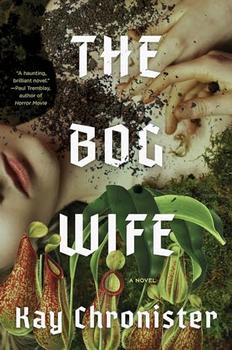Book Club Discussion Questions
Want to participate in our book club? Join BookBrowse and get free books to discuss!
Please be aware that this discussion guide will contain spoilers!
-
The novel opens with Nora's decision to hide the "trespasser" mushrooms that she sees in
the bog from her brother Percy. Why does Nora make this decision, and how does it set the
stage for conflicts between Nora and her siblings later on?
-
What roles do Eda, Charlie, Percy, and Nora play in the family at the beginning of the novel,
and how do their dynamics change through the course of the story?
-
Much of the Haddesley family believes that Charlie is not up to the job of being the bog's custodian. Do you agree? Why or why not? What does being the bog's custodian seem to involve, and what do you think it should involve?
-
On page [54], Wenna recalls a conversation with her husband Michael where he accuses her of fearing everything sacred. She answers, "how is it sacred if you're not afraid of it?" Why do you think Wenna feels this way? How are fear and worship intertwined for the Haddesley family?
-
What does Nora's decision to open and read Wenna's mail tell us about her character and motivation? What do you think of the action she takes next? What would you have done, in Nora's position?
-
What might the hemlock tree embedded in the roof of the house symbolize? What feelings does its removal bring up for each of the Haddesley siblings, and how do those feelings reflect their different perspectives on their home?
-
Discuss the story of Charles Maturin, the first "Haddesley," which Charlie learns on page
[195-198]. How does this story change your perspective on the Haddesleys? Does it matter
whether the Haddesley traditions are only a century old or two millennia?
-
On page [211], Eda thinks to herself that "she never really let her siblings have the punishment they deserved… she needed them too much, and what if they no longer loved her afterwards?" Were you surprised to hear Eda express that she needed her siblings? How might this sense of dependence explain her behavior throughout the novel?
-
Why do you think Percy and Charlie react so differently to the discovery of their mother than their sisters do? What was your own reaction?
-
Ritual plays an important role in the lives of the Haddesleys, from the exchange of
patriarch for bog-wife to the yearly peat-cutting. Eda even thinks of conceiving a baby and giving birth as rituals. What sets apart a ritual from a normal action or experience? Why do you think ritual is so important to the Haddesleys, and especially to Eda?
-
Discuss the bog-wife's story of the compact between the bog and the Haddesley family on pages [275-276]. How does her history of the bog contrast with the Haddesley mythology that we learn earlier in the novel? What might be the significance of these two different stories?
-
In the final chapters of the novel, each of the Haddesley siblings makes a choice about how to move forward. Which of these choices most surprised you? Did you wish that any of these characters had made a different choice?
-
Do you think the birth novel's conclusion represents a new beginning for the family – or the restarting of an old cycle? What do you imagine might happen to each character after the end of the novel?
-
The Bog Wife draws from a tradition of fairy tales about men who marry magical non-human women, such as selkie stories. What does the novel suggest are the consequences of this kind of marriage? How does the marriage between Charles Haddesley and the bog-wife seem to affect their children's views on marriage, love, and sexuality?
-
For much of the novel, the Haddesleys fear the bog is dying and try to save it – only to
learn that it is actually going through a healthy process of change that they have been holding back. What does this misunderstanding suggest about the relationship between humans and the natural world? What responsibilities do you think the Haddesleys have to the bog? Is it best taken care of, or left alone?
Unless otherwise stated, this discussion guide is reprinted with the permission of Counterpoint Press. Any page references refer to a USA edition of the book, usually the trade paperback version, and may vary in other editions.
